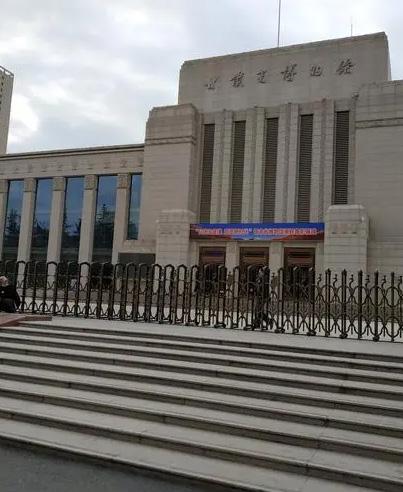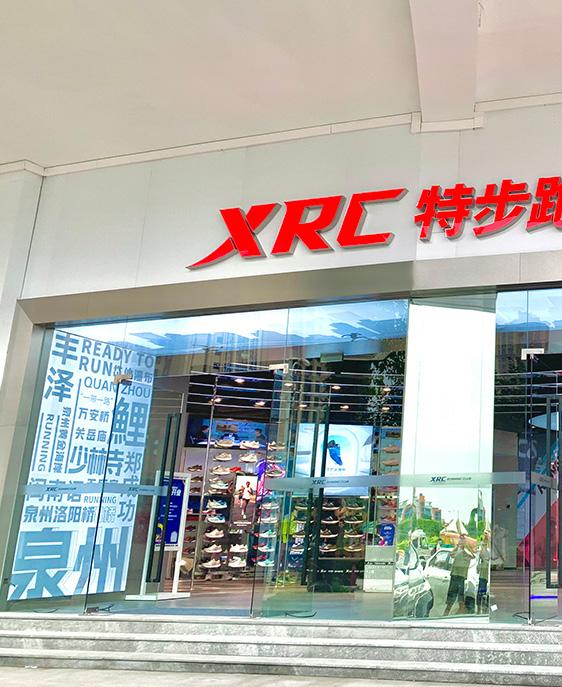
27 minute read
OUR SUSTAINABILITY FRAMEWORK AND STRATEGIES 6
We observe the mounting concern over climate change and is committed to mitigating our impact on the environment. In early 2021, the Sustainability Committee set out our “10-Year Sustainability Plan”, effective from 2021 to 2030. The plan focuses on three critical topics, namely supply chain management, environmental protection and social responsibilities with 12 key themes.
As one of the largest countries in the world, China is committed to adopting green and low-carbon approaches in its economic and social development. The government has set binding targets of achieving peak carbon dioxide emission before 2030 and carbon neutrality before 2060. We have established five environmental protection targets focusing on sustainable innovation, chemical use, energy-saving and air emission, waste management and water management to support the country’s commitment to transform and upgrade our business operations.
Advertisement
In addition, China has several national policies for peaking carbon emissions and achieving carbon neutrality, including “1+N climate policy system” and the national emissions trading scheme on the Shanghai Environmental & Energy Exchange. Together with the strong national policy support, we believe that our plan provides clear directions and goals for the Group to achieve sustainable growth and further solidify Xtep’s leading position in the sportswear market.

Focus areas and targets
Sustainability framework
Relevant sustainable development goals3
Key aspects
Theme
Supplier assessment
Supply chain management
Policy NO. 8
Policy NO. 12
Supplier management
ESG capability enhancement
Sustainable product innovation
Environmental protection
Policy NO. 6
Policy NO. 7
Policy NO. 9
Policy NO. 12
Policy NO. 13
Environmental impact of products
Chemical use
Energy saving and air emissions
Environmental impact of operations
Water management
Waste management
Staff incentive and welfare
Staff health and safety
Social responsibilities
Policy NO. 1
Policy NO. 3
Policy NO. 8
Employment and welfare
Training and development
Promoting sports
Social contribution
Community investment
2030 Targets
Enhance ESG performance assessment for new supplier admission
Conduct supplementary performance review regularly on tier 1 suppliers
Provide ESG training and advise ESG initiatives to existing suppliers
Establish regular review mechanism to examine existing suppliers’ ESG performance
Increase the proportion of products using environmentally friendly PLA materials
Invest in 60 apparel products using environmentally friendly materials every year
Increase the proportion of products using recyclable and organic materials
Increase the proportion of products using renewable materials
Increase the penetration rate of water-based glue for shoe products to 50% or more
Obtain VOC standard for vehicle air quality
Increase cooperation with Bluesign dyeing auxiliaries’ manufacturers in garment production
Increase the penetration rate of water-based glue for shoe products to >=30%
Reduction of electricity, gas, heat, and carbon emission
Reduce shoes production plants power consumption and corresponding carbon emissions by 20%
Reduce the use of electricity, gas, heat and other energy in apparel production plants by 20% and increase the use of clean energy by 20%
Reduce water consumption per unit output value of shoes production plants by 10%
Increase the utilisation rate of water resources in apparel production plants to 50%
Use FSC CoC certification to produce certificates and hangtags for apparel products
Maintain turnover rate (excluding factory piecework employees) to less than 30%
Regularly review compensation and benefits to retain the Group’s competitiveness within the market
Standardize safety procedures for all business operation links
Promote occupational health and personal safety management
Increase the proportion of the first successor for key posts to more than 80%
Increase the number of corporate culture lecturers to more than 30
Develop at least three sets of evaluation tools for each talent standard module
Sponsor at least 20 marathons every year (excluding the impact from COVID-19) and support more than 200,000 participants in marathon and running activities
Promote the development of younger generation in China via various campaigns and activities onate more than RMB80 million worth of sportswear gears every year
Establish volunteer team and organise public welfare volunteer activities at least twice a year
Applicable to
The Group
The Group
Core Xtep Brand
Saucony & Merrell
K-Swiss & Palladium
Core Xtep Brand
Core Xtep Brand
The Group
The Group
The Group
Core Xtep Brand
Core Xtep Brand
Stakeholder Management and Materiality Assessment
Stakeholders’ expectations are crucial to the Group’s efforts to define its sustainability strategy and reporting. We aim to nurture our relationships with our internal and external stakeholders to ensure we are responsive and inclusive.
We commissioned an independent consultant to conduct a stakeholder engagement exercise to identify the Group’s material sustainability issues. Through this exercise, we revisited and updated our list of material issues by considering our current business operations and the expectations of different stakeholders.
Materiality assessment result
The materiality assessment results identified sustainability issues that are the most important to our stakeholders, and we analyse the outcomes of the assessment for our sustainability approach, strategy and reporting.
During the year, we renewed our materiality assessment based on the input obtained from the stakeholder engagement exercise. The results reflected that social and product-related issues were comparatively of greater significance than environmental issues. Out of the 20 issues shortlisted, stakeholders are most concerned about the five issues of product quality and safety, product innovation, employment and welfare, staff training and development and supply chain management. In addition, the Group also recognises the growing concern regarding the environmental impact of the sportswear industry and intends to continuously enhance the transparency of our performance in this area.
Identification
A list of sustainability issues relevant to the Group were identified with reference to the SEHK ESG Guide, material sustainability issues of peers and industry trends.
Stakeholder Engagement
Stakeholders (including investors, suppliers, employees, consumers and media) were invited to prioritise the identified sustainability issues from their perspectives through tailored e-questionnaires. One-on-one meetings with the Group’s management were also conducted for them to share their views on what issues are material to the Group’s sustainable development.
Validation
The findings from the e-questionnaires were consolidated, analysed and presented in a materiality matrix. The prioritization of the sustainability issues was adjusted per the management interview findings. The matrix was then validated by the management to arrive at the final materiality matrix.
1. Use of energy
2. Use of water
3. Use of packaging material
4. Air and wastewater emission
5. Hazardous waste management
6. Non-hazardous waste management
7. Climate change
8. Greenhouse gas emissions
9. Employment and welfare
Employee welfare and development
Environmental protection Operating practice
10. Employee development and training
11. Health and safety
12. Labour rights
13. Product quality and safety
14. Product green innovation
15. Supply Chain Management
16. Marketing and advertisement
17. Protection of intellectual property
18. Anti-corruption
19. Social contribution and charity
Social investment
20. Advocating sports development
Supply Chain Management

As a leading professional sports brand with an extensive distribution network, the Group is aware of the broader influence it has and can use its purchasing power to encourage suppliers to operate more sustainably. ESGrelated factors form a critical part of the Group’s suppliers’ assessment process and have a due weighting in our consideration of potential and existing suppliers. We are also aware of the broader concern from our stakeholders on product quality and safety. The Group regularly monitors and evaluates our suppliers’ performance and implements different initiatives to enhance andcmanage our product quality control to reduce the risk of large-scale recalls.
Supplier assessment
As a responsible business, we are well aware of the environmental and social impacts that may ensue along the supply chain. The Group sources raw materials and parts used in our products from different suppliers while outsourcing a large proportion of product manufacturing to different manufacturers (CFOB). We adopt a comprehensive procurement and tendering procedure to ensure that related activities are carried out fairly and transparently. The Group’s Supplier Management Manual underpins our commitment and serves as a guideline in managing our vast supply chain. Suppliers, business partners, and associates are encouraged to uphold standards on environmental, social, and ethical business practice issues that align with the Group’s standards. Our Supplier Management Centre and dedicated teams from different brands work closely with suppliers to ensure their performance, and all suppliers must comply with the Group’s Supplier Code of Conduct during the contracting stage.
Regular monitoring and evaluation are carried out to assess the performance of our suppliers. In 2021, 70% of our footwear and 88% of our apparel were manufactured by our suppliers. The Group maintains relationships with 374 suppliers globally, 364 in Mainland China, and 10 overseas. The breakdown of these suppliers by nature is as follows:
TIER 3
19 %
Suppliers providing finished products and their providers of particular manufacturing processes.
35 %
Our supplier portfolio4: Tier 3 Tier 1 Tier
46 %
TIER
1 TIER 2
Suppliers of materials (e.g. shoe uppers, soles, fabric, etc.) and their providers of special manufacturing processes.
ESG assessment for new suppliers and ongoing evaluation
Upweighting ESG performance in assessment
In 2021, we enhanced and upweighted the criteria of ESG performance in the assessment process for potential and existing suppliers. The Group’s Supplier Management Centre has revisited the on-site inspection section of new supplier and ongoing supplier assessment and upgraded the existing Environmental and Safety Management factors to a new set of CSR indicators as one of the criteria for evaluation.
In placing a higher emphasis on suppliers’ ESG performance, we adjusted the weight of the CSR criteria to 20% of the overall supplier evaluation, which is an increase from 10% last year. The CSR section includes 68 questions focusing on seven aspects, which provides an in-depth understanding for the Group to determine whether our supplier upholds environmental and social standards that align with the Group’s practice.
All new suppliers in China were assessed by our in-house team, with a few suppliers overseas evaluated by thirdparty auditors. Below is the summary of the new supplier admission process:
Initiation Assessmentdocument review
Departments initiate the new supplier admission procedure by completing a form with the details of their demand and basic information of the supplier to be introduced.
The request will be reviewed by the Supplier Management Centre, and the assessment process will be initiated once the request is passed.
As the initial screening process, potential suppliers will be invited to:
Complete a Supplier Information Form
Provide relevant certifications and licenses including credit reports, tax certificates, payroll records, relevant certifications (e.g. ISO 9001, ISO 14001 and ISO 45001 certifications), fire safety inspection results and environmental impact assessment reports. For specific suppliers with higher environmental and safety risks, there will be additional requirements depending on their business nature. For example , chemical suppliers are required to provide their Hazardous Chemicals Production License and other relevant government approval documents, and fabric and printing suppliers are required to provide emission permits and undergo on-site inspections of their emission facilities.
Suppliers that receive a rating of 70% or above will enter the next stage of on-site inspection.
Ongoing supplier evaluation
Furthermore, the Group Supplier Management Centre performed 29 ongoing assessments of its tier 1 suppliers that have collaborated with the core Xtep brand for one or more years5. The inspections successfully identified various improvement areas for the suppliers, and where applicable, re-assessments were scheduled to follow up on the supplier’s implementation of the improvement suggestions. In addition, due to the impact of the COVID-19 pandemic, K-Swiss and Palladium suppliers’ on-site inspection was not arranged in 2021. The inspection team identifies potential improvement areas throughout the assessment process and provides practical improvement suggestions for suppliers to implement. There are four levels of improvement requirements depending on the score of the supplier receives:
Assessment - On-site inspections Admission
The on-site inspections are conducted by the Supplier Management Centre and relevant department representatives (for suppliers in China) or thirdparty auditors (for suppliers outside China).
The assessment criteria and the weighting of assessment scores vary among different brands. For reference, suppliers of our core Xtep brand are assessed following the five aspects below:
Quality management system, Key quality control points, Research and development (R&D) and production process management system, Logistics and workshop management, CSR.
Among these, Corporate Social Responsibility makes up 20% of the total assessment score, covering the following assessment criteria: Compliance with national environmental law and regulations, Basic labour rights requirements (in particular child and forced labour), Fire safety equipment, Machinery safety provisions, Employee occupational health and safety provisions, Employee accommodation and catering, Additional bonus points questions related to environmental performance (e.g. third-party social responsibility certification)
To ensure the credibility of the on-site inspection, a list of documents required will be provided tothe supplier 24 hours before the assessment takes place, and suppliers that cannot provide the information will receive 0 point for that specific indicator. We are concerned about human rights. Any case of child and forced labour or significant occupational safet issue observed in the inspections will result in the termination of the supplier admission process.
The on-site inspection findings will be documented and a composite score willbe given to the supplier. Suppliers with a composite score of 70% or above are accepted directly, while suppliers scoring 60% to below 70% are conditionally accepted with a three-month correction period. The assessment results of suppliers that fail are archived so that the Group will be alerted if there are future admission attempts.
For case where the suppliers fail to implement adequate corrective measures, we will cease our collaboration with them and seek alternative suppliers.
In supporting the Group’s sustainability plan regarding the supply chain management, we have established four targets to enhance our supplier chain ESG performance and management. Please refer to the focus areas and targets listed in the 10-Year Sustainability Plan in “Our Sustainability Framework and Strategies” section for details.
Engaging suppliers and build up ESG capabilities

To identify and minimise the social and environmental risks along its supply chain, the Group actively communicates with our suppliers to help improve their sustainability practice and performance. We are planning different training series and have engaged with tier 1 suppliers in China and conducted seminars on ESG introduction to share the Group’s ESG requirement and the basic concept of ESG, including the topics of ethical business practice and environmental management. Open discussions with suppliers are initiated during those seminars to address the difficulties and exchange ideas on improving the overall ESG performance of the supply chain.
Product and material quality assurance
The Group is rigorously managing the quality specifications and quality assurance in our production processes. In order to meet our customers’ requirements on product quality, our products are subject to stringent quality control tests during the production process to ensure that the items meet the Group’s quality requirements. The Group’s quality control teams handle the quality control process to perform relevant sample testing and inspection to enhance supplier quality control.
Product quality control process and procedures
As an ISO 9001-certified company, the quality management system of the core Xtep brand ensures products consistently meet regulatory requirements and customer expectations At the research and development stage, the Standard teams perform thorough tests and verification of the product and the materials used and formulate standards for mass production. During the year, the standard teams formulated and reviewed different quality management-related documents to enhance the quality management system. 28 documents were shared onto the Xtep Quality Information Sharing Platform to improve the standardisation of the product quality management between the Group and its suppliers. In addition, we have conducted trainings on quality management and procedures with more than 400 participants to improve our quality control process and procedures.
At the production stage, the quality management teams perform regular quality control activities during the in-house production process and regularly inspect the product quality of our suppliers to ensure that the finished products pass physical and chemical standards before being delivered to the customers. In addition, Xtep conducted monthly sample testing for its tier 1 and tier 2 suppliers. Every quarter, the raw materials and finished productions will be sent to nationally certified third-party laboratories for testing to ensure product quality and safety. The Group also performs a strict quality control process for other brands where the production process is entirely outsourced. In general, quality tests are performed by our quality management teams either upon arrival at our Quanzhou Logistics Centre or directly on-site at the supplier factories. To improve the product quality and the production process, K-Swiss and Palladium, in particular, have their manufacturing machineries upgraded during the year.
Enhancing product quality control with suppliers and customers
In order to have better and close monitoring of supplier performance on product quality, the Group actively assists our suppliers in building their quality control and management capabilities. In 2021, Xtep organised monthly meetings with its suppliers to share the latest market trend and practices in product quality control and conducted regular interviews with customers to understand their needs for product quality improvement of our supply chain.
The Group has provided various channels for our customers to make a complaint or request information and established clear internal policies on handling customer complaints and product defects. Any customer complaint received at our retail points, through the “400 Hotline” or other communication channels, will be addressed in a timely and proper manner by our customer service team. For example, we provided one-to-one assistance to shoppers in our retail shops to promptly deal with customer inquiries and complaints. In 2021, the “400 Hotline” received approximately 907 product and service-related complaints, a decrease of 22.6% compared to 2020.
To improve customer satisfaction, the notice on The Return and Exchange Policy for Customers was implemented on April 15, 2021, which stipulates that all products that consumers want to return after wearing will be accepted unconditionally. The Group also has policies for handling products recalled due to quality issues or other reasons. The Quality Management Centre will comprehensively investigate any major product recall, and they will submit the investigation results to senior management and relevant departments. Responsible departments will implement appropriate corrective measures to mitigate the defects identified and prevent future incidents from occurring. In 2021, there was no major product recalls due to health or safety reasons.
Environmental Protection

As environmental regulations become increasingly stringent, it is vital for the Group to actively explore the wider use of innovative alternative materials and sustainable innovations to integrate environmental sustainability into our production and operations. Failure to keep up with low-carbon transition may negatively impact the Group’s financial returns and damage our reputation. The Group monitors the impacts of its day-today operations with the ISO 14001-certified Environmental and Occupational Health and Safety Management System. This system allows us to effectively utilise resources and improve the environmental management practices at our production sites.
Green product innovations
We are committed to steadily increasing the use of environmentally friendly materials in our production. Cotton is one of the most commonly used crops in the textile industry and is also the main natural fibre used in our apparel products. As a natural material, its cultivation is associated with different environmental and social impacts. The production and processing of cotton requires a large amount of water, and the pesticides and fertilizers used in the process can pollute the soil and water in the nearby environment. The heavy use of these chemicals also raises concerns regarding the health of farm workers and nearby populations.
To lessen the environmental impact in our production, we are currently focusing on using organic cotton, recyclable plantbased materials, and biodegradable materials as the main green material for our apparel and footwear product production. There are three main areas in the cycle of sportswear products where efforts can be made to reduce environmental impact. These areas include the raw material selection, the production process, and the disposal of the product at the end of its life. At Xtep, we have been investing extensive effort in developing and adopting more environmentally friendly materials to minimise the environmental impact of our products throughout their cycles.
Organic cotton and recycled cotton yard products
We have expanded our line of organic cotton and recycled cotton yard products. During the year, we have launched several apparel products made of organic cotton and recycled cotton yarn.
Recycled materials
There has been a growing movement in the industry to utilise recycled materials for producing fabrics and other materials for apparel and footwear products. The use of recycled materials can save plastics and other non-biodegradable materials from being sent to landfills, while bringing potential energy savings to the production process.
In 2021, we launched footwear products for Xtep, Saucony and Palladium with shoe insoles foam and bottom lining made from ECO Ortholite, recycled plastic bottles, and recycled metal accessories. Saucony launched the Jazz Court RFG made of 100% natural materials, and Palladium launched its apparel and footwear products such as Pampa Earth Collection Series and Organic Collection, which utilises organic materials aligned with Global Recycled Standards, Global Organic Textile Standards, and OEKO-TEX Standard 100 guidelines.
We continue to explore the possibility of utilising more recycled materials in our footwear products. By 2022, we expect to introduce more product components that are manufactured with a high proportion of recycled materials in selected product lines. They include insoles, synthetic leather uppers and cotton uppers.
Biodegradable materials
In 2021, Xtep launched a new environmentally friendly PLA T-shirt. PLA is a biodegradable material fermented and extracted from corn, straw, and other crops containing starch. The apparel product made of PLA being buried in the soil in a specific environment can be naturally degraded within one year.
Xtep launched its first PLA products since 2020 and has advanced the use of biodegradable materials in its products ever since. We increased PLA content in our T-shirts from 19% to 60% in 2021; and further raised the PLA content in our T-shirts launched in the second quarter of 2022 to 76%. Meanwhile, the trial production of the 100% PLA windbreaker is expected to kick off in the third quarter of 2022.
Other materials
We are developing eco-friendly products that use other materials to reduce our environmental impact. These materials include Tyvek®, a 100% recyclable slice-like material made of high-density polyethylene (“HDPE”) fibres and combining the performance of paper and fabrics such as lightweight, waterproof and agile.
In supporting the Group’s Sustainability Plan focusing on product sustainable innovation, we have established four targets to increase the amount of product manufactured with a high proportion of recycled materials in selected product lines. Please refer to the focus areas and targets listed in the 10Year Sustainability Plan in “Our Sustainability Framework and Strategies” section for details.


Use of chemicals
The Group is committed to ensuring our product safety and proactively researching alternatives to chemicals of concern, at the same time ensuring that the performance and quality of our products will not be compromised. We fully comply with our internal standards and the national use of chemicals standards in all our operations.

In supporting the Group’s sustainability plan focusing on chemical use, we have established four targets to increase the amount of product manufactured toward a toxic-free environment in selected product lines. Please refer to the focus areas and targets listed in the 10-Year Sustainability Plan in “Our Sustainability Framework and Strategies” section for details.
Reducing footprint along the operations
As a leading running shoe brand in the industry, we are committed to reducing our carbon emissions and other air pollutants and support the move to a low-carbon future through environmentally friendly energy sources. We are working on the following initiatives to improve energy efficiency in our operations.
At the Group’s production facilities, we continuously adjusted and upgraded the lighting controls and manufacturing equipment at our production facilities for energy saving. During the year, we have invested more than RMB3 million in replacing and upgrading our manufacturing equipment with more energy-efficient models in our headquarters and production site operations.
In addition, we also made efforts to adopt cleaner energy sources. All boilers at our production sites are currently running on natural gas, improving energy efficiency and reducing air pollution and greenhouse gas emissions. The Group also conducts regular maintenance for the boiler to reduce any potential waste of resources due to equipment aging or failure. We also trailed renewable energy at our Hunan factory by installing solar panels. The solar panel system helped reduce our use of grid electricity and even generated excessive renewable electricity at times that could be sold back to the grid.
We continuously promote energy conservation at our retail stores, factories, and headquarters by posting energysaving guidance and internal communication materials such as posters to increase our employees’ awareness in energy conservation. In addition, the Group regularly monitors electricity consumption at all of our operations to promptly identify abnormalities.
In supporting the Group’s sustainability plan focusing on energy saving and air emissions, we have established four targets on responsible energy use to improve the environmental footprints at our production sites. Please refer to the focus areas and targets listed in the 10-Year Sustainability Plan in “Our Sustainability Framework and Strategies” section for details.
ENERGY CONSUMPTION IN 2021 (KWH)
The total amount of liquefied petrol gas consumption in 2021 decreased by 46% compared with 2020. This is mainly due to the switch from consuming liquefied petroleum gas to electricity at some of our canteens.
The 2020 data has been restated in line with update on the liquefied petrol gas consumption data in 2021.
The total amount of natural gas consumption in 2021 decreased by 32% compared with 2020. This is mainly due to the closure of one of our canteens.

Water management
The majority of the Group’s water consumption occurs during the production process and its dormitories. We have adopted waterefficient appliances in our factories and dormitories and put several measures to improve water efficiency at our factories and dormitories, including process improvements and water recycling and reuse measures.
In 2021, we continuously adjusted the water pressure of our living quarters and installed timers to control the flushing frequency of the washrooms in our factories and dormitories, which reduced the water flowrate and subsequent consumption. We will continue to upgrade the flushing control system at our employee dormitories to improve water efficiency in the coming years.
In supporting the Group’s sustainability plan focusing on water management, we have established two targets to address and improve water efficiency in our production. Please refer to the focus areas and targets listed in the 10-Year Sustainability Plan in “Our Sustainability Framework and Strategies” section for details.
Packaging materials and waste management
The Group has introduced sustainable packaging into our products to lessen the environmental impact since 2020. We have replaced the tags and quality certificates of the Xtep brand’s apparel and accessory products. We also provided shoe boxes with handles for our customers to reduce the use of plastic bags in 2021. The most common hazardous wastes we produce during manufacturing are used industrial glues and their containers. We source all glues from qualified international suppliers, and all glues have passed relevant environmental testing for hazardous chemicals and odour. For the limited hazardous waste generated, we appoint qualified third-party companies to properly handle and dispose of the waste to ensure that local laws and regulations on hazardous waste disposal are followed. The Group is extremely careful about managing our hazardous waste. We have set a goal of “zero chemical and explosion incidents” and are fully compliant with regulations in hazardous waste disposal.
As many of our workers live in the dormitories, a considerable amount of domestic waste is generated each day.
In managing general waste, we uphold the principles of reducing, reusing, and recycling throughout the different functions of the Group. All recyclable waste is categorized and recycled centrally. Other general waste from our operations is properly disposed of in accordance with local requirements. External contractors are appointed to handle and dispose of general non-recyclable waste properly.
In supporting the Group’s sustainability plan focusing on waste management, we have established two targets to minimise waste production and achieve 100% harmless treatment of hazardous substances.
Air emissions and wastewater discharge
The Group adheres to the “6S management system” and requires all our employees to conserve the use of electricity and water. A certain amount of air pollutants is emitted from the boilers and other equipment in our production process. To reduce such air emissions, we have switched from using diesel for powering our boilers to natural gas, resulting in less air pollution and greenhouse gas emissions and improved energy efficiency. Before being emitted into the atmosphere, the exhaust gas from our production process is treated by activated carbon filters and ultraviolet (“UV”) photocatalysis to remove and decompose pollutants safely before emission. Our wastewater discharge is not subject to any specific requirements from the government as the wastewater is mainly domestic with insignificant levels of chemicals. We discharge such wastewater into the municipal wastewater network in compliance with local requirements in all our operations.
Nurturing employees
The Group believes that attracting and retaining talent is the key to our business development. We abide by relevant laws and regulations throughout the recruitment and employment process, including the “Labor Law of the People’s Republic of China” and the “Labor Contract Law of the People’s Republic of China.” We also support diversity and are committed to promoting equal employment opportunities in relation to personnel matters, including recruitment, training, promotion opportunities, benefits, transfer, and dismissal. We ensure that our employees are not discriminated against or harassed due to their gender, age, ethnicity, nationality, marital status, or religion. We strive to contribute to the community development in which we operate. As part of our community effort, we have participated in various charitable involvement, including cash donations and community services to show the Group’s care to the community during the year.
Staff portfolio
We believe the development and retention of talent are the foundation for the Group’s long-term growth and success. During the year, we have approximately 8,500 employees, and the breakdown is shown as below:
Staff portfolio
By age group
By function
By employment category
Talent retention
The Group implements a fair and competitive remuneration and welfare system. Remuneration is determined based on qualifications, experience, nature of the work, performance, and market conditions to provide equal employment opportunities. To retain and motivate talent, we provide competitive remuneration to our employees that is considerably higher than the minimum wage level.
We also established a comprehensive Performance Management System to review employee performance and inform promotion and wage adjustment decisions. Under the system, employees discuss their work performance with their supervisors regularly. The Human Resources department will document the appraisal results to determine whether the employee is eligible for promotion or wage level review.
In 2021, we established a Staff Position Management System to attribute each position, including grade, title, and job description clearly, to best achieve the efficiency of operations and enhance employee utilisation. We have also evaluated and revised our recruitment management system and improved the internal transfer procedures to optimise retention and improve recruitment efficiency.
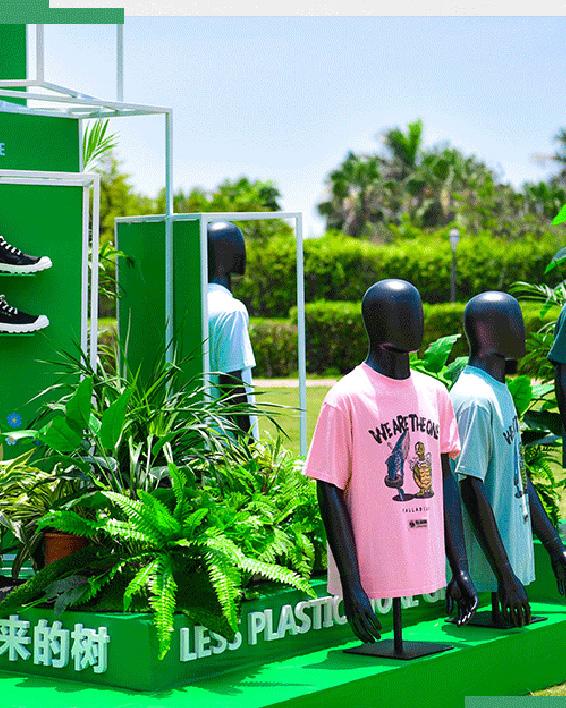
Child and forced labour
We seek to create an ideal work environment where labour rights and standards are upheld. The Group’s Staff Handbook covers topics such as compensation and dismissal, recruitment and promotion, working hours, rest periods, equal opportunity, diversity, preventing child and forced labour, and other benefits and welfare issues. In addition, it promotes a fair and transparent career platform to ensure employees are not discriminated against at work in any way due to gender, age, ethnicity, nationality, marital status, religion, etc. The Group abides by relevant laws and regulations to prohibit the employment of child and forced labour in all of its operations. We perform stringent checking and control procedures in the selection and on-boarding processes to ensure no underage labour is hired. Regular reviews on our employment practice are also conducted to ensure we operate fairly. We were not aware of any material non-compliance with law and regulations regarding labour standards during the reporting period.
Furthermore, we have stepped up our efforts to foster a work environment focused on equality and inclusion in all of our supply chains. The Group assesses the basic labour rights requirements and employees’ accommodation and catering during the potential and existing supplier evaluation to protect employees’ legitimate rights and interests. In 2021, we did not observe any incident of child or forced labour during our supply chain evaluation exercises.
Labour health and safetyLabour health and safety
Ensuring employees’ health and safety in the workplace is our responsibility. To build a safe and caring workplace, we have implemented the OHSAS 18001 and ISO 14001-certified management systems to manage and reduce our employees’ occupational health and safety risks. In line with standards and relevant laws and regulations, we have also put detailed operating procedures, working guidelines, and manuals to provide necessary guidance on safety procedures and processes at work.
To ensure the safety of our working environment, we have established an Occupational Health and Safety Committee to closely monitor and report the Group’s health and safety performance during the year. A professional health and safety officer is present at each shift to inspect whether frontline workers follow safety procedures in the manufacturing process. As a routine reminder, all workers receive a safety briefing before the start of each shift, followed by a summary session after the shift to sum up any safety issues observed during the shift. The safety briefing allows employees to understand the potential risks of their work, raises their safety awareness, and prevents accidents.
To provide comprehensive protection for our employees, we offer free annual health check-ups and periodically conduct different emergency drills to improve our employees’ health and safety awareness. We have renewed and upgraded fire safety equipment and machinery in our operations during the year to maintain a safe working environment.
We are not aware of any non-compliance with laws and regulations in 2021 that had a significant impact on the Group with respect to occupational health and safety. Among the 48 injuries that occurred during the year, there were some minor workplace injuries and commuting accidents that occurred on business trips. All cases were reported to the local authorities for occupational injury assessment and follow-up actions.

Training and development
The Group is striving to become an outstanding employer who pays attention to the development and growth of our employees. We invested heavily in training and built a diversified career development platform for our employees to fully unleash their potential.
Xtep Talent Centre
We continued to explore our employees’ needs for training and equip our staff with the skills they need to meet the demands of their current role through the Xtep Talent Centre (previously named Xtep University). It comprises three departments and one online training platform, building our staff capability to develop into management talent and professionals.
Xtep Talent Centre
According to the competency model of each position and the career development path of employees, devise a learning map for each employee and provide technical and human resources support for the training system, mainly covering the Group’s professional staff. Carry out planning and formulate leadership development strategies for various levels and types of talent, organise and coordinate internal resources, design and run various leadership development programs, mainly covering the Group’s management.
Respond to the Group’s strategic needs, improve organisational performance and develop comprehensive talents who embrace Xtep’s values, mainly covering the Group’s new joiners and management trainees.
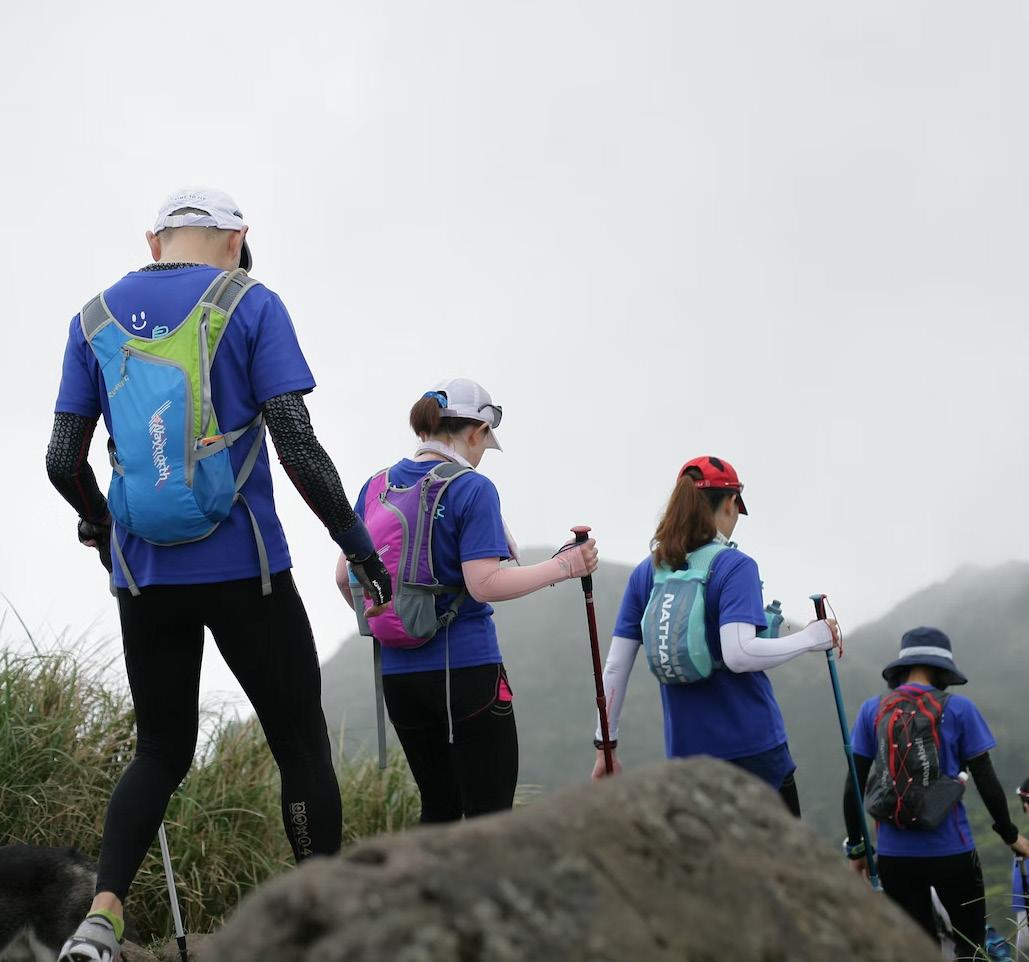
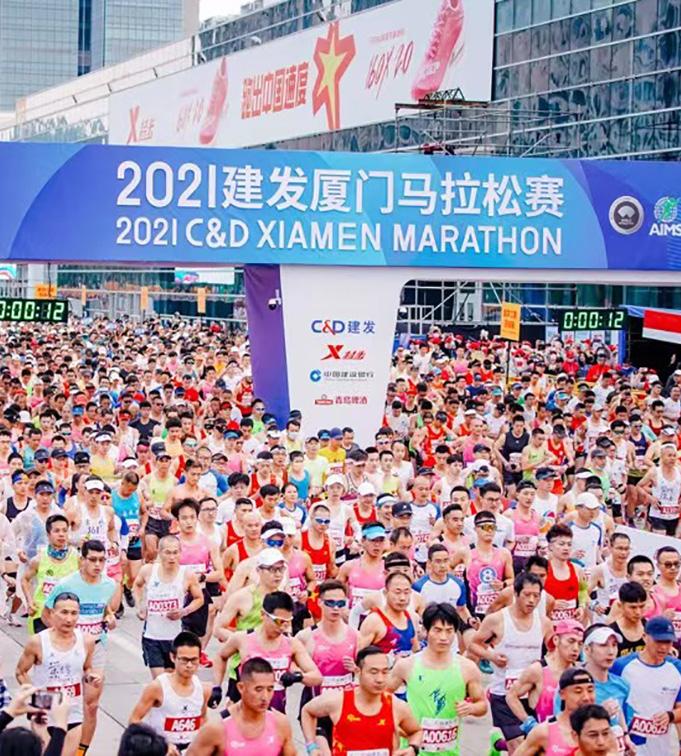

Leisure and welfare
To reinforce our employees’ sense of belonging, we have introduced a welfare system that provides additional benefits alongside their standard benefits packages, including social insurance, paid holidays, and free medical check-ups. We also provide corporate subsidies such as daily meals, transportation subsidies, and accommodation subsidies.
We seek to protect the well-being of our staff by encouraging a healthy work-life balance. A wide range of open spaces for recreational and leisure activities for different staff interest groups are organised to encourage a worklife balance culture within the Group.
Employee birthday parties and holidays
We organise various events to celebrate special holidays such as International Women’s day, Labour Day, Mother’s Day, Father’s Day, Teachers’ Day, etc. We also send out birthday gifts to our employees to deliver love and care and strengthen the link between employees and the Company.
Senior management service day
On specific days, our management prepares and serves a variety of meals for our staff as encouragement, allowing management to interact with employees of different levels.
Clubs in workplace
A wide range of activities, including a total of 120 sports leagues (e.g., basketball, football, badminton, table tennis), have carried out and attracted over 1,000 participants.
Corporate culture
We have launched the “Xtep Appreciation Card” project, which allows managers to praise the excellent behaviours of employees; “Me & my Xtep” event is organised for employees to strengthen their sense of belonging to the Group.
Running culture
We continue to organise and carry out 321 running festivals and other national joint running activities during the year. In addition, we have established a center-based employee running group and arranged running activities regularly to promote a healthy worklife balance culture within the Group.
Contributing to the society
The Group strives to bring strong positive energy to the community. Over the years, we built up and continued to strengthen our running ecosystem by investing in running product innovations and through a marketing strategy that consisted of marathon and running event sponsorships and sports celebrity endorsements to promote a healthier lifestyle. We actively invest in community programmes that benefit different social segments. As a corporate citizen who is committed to social responsibility, we seek to effect change by investing in initiatives that contribute to a better community. We continuously engage with communities, collaborate with local charitable organisations, and encourage our staff to participate in volunteer activities to achieve these goals. In light of COVID-19 outbreak in the country since 2020, we have donated over RMB156 million worth of sportswear and cash to the community and schools to support their fight against the pandemic.

Xtep Running Clubs
Echoing the rising health awareness, increase in the standard of living, and the growing popularity of running in Mainland China, we accelerated the openings of our XRC during the year. One-stop professional running services, including running a consultation, running group support, mobile device charging, bag storage, and shower facilities, are serviceable to strengthen Xtep’s running ecosystem further and make running more accessible for all. In addition, XRC enables us to perform targeted selling of our products and gain valuable feedback from our customers.

Marathon sponsorships
Marathon events around the world faced severe disruptions from the COVID-19 pandemic. Although restrictions on outdoor recreation were in place in the second half of 2021 due to the pandemic, it did not hinder our determination to sponsor largescale marathons and races and promote public health in the first half of 2021. We sponsored seven physical marathons and races in Mainland China10 that attracted over 91,000 participants during the year.
Xtep expanded its partnership with the China Next Generation Education Foundation and entered the Gansu Province
during the Year
We have been working closely with the China Next Generation Education Foundation to donate sportswear to students at Shandong, Sichuan, Guizhou, Yunnan, Inner Mongolia, Ningxia, and Qinghai provinces in the past years.
In 2021, we maintained our partnership with the Foundation and entered the Gansu Province for the first time. We donated sportswear worth around RMB4 million to students in underdeveloped areas in the Gansu Province to promote healthy growth and development.
In the future, we will seek to improve the quality of our charitable activities, adopt new formats, and enrich the content of our activities to allow young people living in poverty to experience sports and enjoy sports.
Xtep’s Chairman Mr. Ding Shui Po, appointed as the Consultant for Quanzhou No.5 Middle School Tongxin Education Foundation
In June 2021, Xtep’s Chairman, Mr. Ding Shui Po, was appointed as the First Term of Consultant for Quanzhou No.5 Middle School Tongxin Education Foundation.
The foundation’s purpose is to support the upbringing of children and adolescents by providing education support to combat poverty. In addition, Xtep’s Chairman, Mr. Ding Shui Po, donated RMB1 million to support the development of the foundation.
Providing support to victims in Henan and Shanxi Floods
In 2021, devastating floods swept through the Chinese provinces of Henan and Shanxi. Xtep donated clothing and shoe products worth more than RMB55 million through the China Foundation of Poverty Alleviation and China Soong Ching Ling Foundation to the provinces of Henan and Shanxi.
